Sports
Exploring Sports History in Detail

Exploring Sports History in Detail
Sports history is a fascinating subject that encompasses a wide range of events, athletes, and achievements that have shaped the world of sports as we know it today. From ancient civilizations to modern-day competitions, the history of sports is rich and diverse, offering insights into human culture, society, and athleticism. In this comprehensive guide, we’ll delve into various aspects of sports history, covering key events, influential figures, and significant milestones that have left a lasting impact on the world of sports.
Ancient Origins of Sports
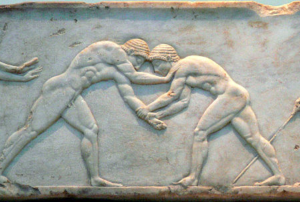
1. Early Civilizations and Athletic Endeavors
Sports have been an integral part of human civilization since ancient times, with early societies placing a significant emphasis on physical fitness and athletic prowess. In civilizations such as ancient Egypt, Mesopotamia, and China, sporting activities were not only recreational but also held religious and ceremonial significance. These early forms of sports often revolved around activities such as hunting, archery, wrestling, and martial arts, which helped individuals develop essential survival skills and fostered a sense of community and camaraderie.
2. Ancient Greek Olympics
Perhaps the most famous example of ancient sports is the Olympic Games, which originated in ancient Greece around 776 BCE. The ancient Olympics were held every four years in Olympia and were dedicated to the god Zeus. These games featured a variety of athletic competitions, including running, wrestling, boxing, chariot racing, and the pentathlon. Athletes from city-states across Greece would converge on Olympia to compete for honor, glory, and prestige, with the victors hailed as heroes and celebrated by their communities.
3. Gladiatorial Combat in Ancient Rome
In ancient Rome, sports took on a different form with the rise of gladiatorial combat. Gladiators, typically slaves or prisoners of war, would engage in brutal battles to the death or until one combatant was incapacitated. These spectacles were held in amphitheaters such as the Colosseum and attracted massive crowds eager for entertainment and spectacle. While gladiatorial combat was inherently violent and often cruel, it played a significant role in Roman society, serving as a form of public entertainment, political propaganda, and social control.
4. Mesoamerican Ballgames
In the Americas, indigenous cultures such as the Maya, Aztec, and Olmec civilizations also had their own unique sporting traditions. One of the most well-known examples is the Mesoamerican ballgame, which was played throughout Central America for thousands of years. The game, known as ullamaliztli among the Aztecs, involved two teams competing to pass a rubber ball through stone hoops without using their hands. The ballgame held religious, social, and political significance for Mesoamerican societies, with the winners often receiving honor, prestige, and even human sacrifices.
5. Legacy of Ancient Sports
The legacy of ancient sports continues to resonate in modern society, with many contemporary sporting events and traditions tracing their roots back to these ancient civilizations. The Olympic Games, for example, draw inspiration from the ancient Greek Olympics, while sports such as wrestling, boxing, and track and field have evolved from their ancient counterparts. The enduring fascination with ancient sports serves as a testament to the enduring power of athleticism, competition, and human achievement across time and cultures.
Evolution of Modern Sports

1. Industrial Revolution and the Rise of Organized Sports
The Industrial Revolution of the 18th and 19th centuries marked a significant turning point in the evolution of sports. As urbanization and industrialization transformed society, there was a growing need for organized recreational activities to address the leisure time of the working class. This led to the establishment of organized sports clubs, leagues, and competitions, which provided opportunities for individuals to participate in structured athletic pursuits. Sports such as cricket, football (soccer), rugby, and tennis gained popularity during this period, laying the foundation for modern sports as we know them today.
2. Professionalization and Commercialization
The late 19th and early 20th centuries saw the professionalization and commercialization of sports, as athletes began to compete for financial rewards and sponsorship deals. The establishment of professional leagues and the introduction of gate receipts and ticket sales transformed sports into lucrative industries. This era saw the emergence of iconic sports figures such as Babe Ruth in baseball, Jack Dempsey in boxing, and Jesse Owens in track and field, who captured the public imagination and propelled their respective sports to new heights of popularity.
3. Globalization and the Spread of Sports
The 20th century witnessed the globalization of sports, as advances in transportation and communication technologies facilitated the spread of sporting events and competitions across borders. International tournaments such as the FIFA World Cup in football, the Olympic Games, and the Rugby World Cup became platforms for showcasing athletic talent on a global stage. As sports transcended national boundaries, they also became powerful symbols of identity, unity, and cultural exchange, fostering connections between people from diverse backgrounds and cultures.
4. Technological Innovations and Sports Science
Advancements in technology and sports science have revolutionized the way sports are played, coached, and experienced. From the development of synthetic materials for equipment and playing surfaces to the use of data analytics and wearable technology for performance analysis, modern sports have become increasingly sophisticated and data-driven. Sports medicine and sports psychology have also played crucial roles in enhancing athletes’ physical and mental well-being, optimizing training regimens, and preventing injuries, ensuring that athletes can perform at their peak levels.
5. Social Impact and Legacy
Modern sports have had a profound impact on society, influencing everything from politics and economics to culture and identity. Sports have the power to inspire, unite, and mobilize people, transcending barriers of race, class, and nationality. They serve as platforms for social change and activism, addressing issues such as gender equality, racial justice, and environmental sustainability. The legacy of modern sports continues to shape our world, providing opportunities for individuals to excel, communities to come together, and societies to progress.
The Olympic Games
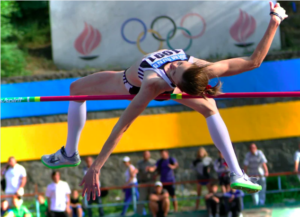
1. Ancient Origins
The Olympic Games trace their origins back to ancient Greece, where they were held in Olympia from the 8th century BCE to the 4th century CE. These games were dedicated to the Greek god Zeus and were part of a religious festival honoring him. Athletes from various Greek city-states competed in events such as running, wrestling, chariot racing, and discus throwing. The ancient Olympics were not just about athletic prowess but also served as a symbol of Greek unity and civilization.
2. Modern Revival
The modern Olympic Games were revived in 1896 by Pierre de Coubertin, a French educator and sports enthusiast. Inspired by the ancient Olympics, Coubertin sought to promote international understanding and peace through sport. The inaugural modern Olympics were held in Athens, Greece, and featured athletes from 14 countries competing in 43 events across nine sports. Since then, the Olympics have grown into the world’s largest and most prestigious sporting event, held every four years in different host cities around the globe.
3. Olympic Symbols and Traditions
The Olympic Games are steeped in symbolism and tradition. The iconic five interlocking rings, representing the five continents of the world, symbolize unity and friendship among nations. The Olympic flame, lit using the sun’s rays in Olympia, Greece, symbolizes the enduring legacy of the ancient Games and the spirit of competition. The torch relay, where the flame is carried by runners from Olympia to the host city, is a symbol of peace and goodwill. The opening and closing ceremonies, featuring colorful performances and cultural displays, celebrate the diversity and heritage of the host country.
4. Sports and Events
The Olympic Games feature a wide range of sports and events, catering to athletes of all disciplines and backgrounds. From traditional events like track and field, swimming, and gymnastics to newer additions like skateboarding, surfing, and sport climbing, the Olympics showcase the best of human athleticism and skill. The Summer Olympics typically feature around 33 sports, while the Winter Olympics include around 15 sports, with each sport comprising multiple events. Athletes train for years to qualify and compete on the world stage, making the Olympics the pinnacle of their sporting careers.
5. Olympic Values and Legacy
The Olympic Games are guided by three core values: excellence, friendship, and respect. These values reflect the spirit of fair play, sportsmanship, and camaraderie that underpin the Olympic movement. Beyond the spectacle of competition, the Olympics aim to promote social inclusion, environmental sustainability, and youth engagement. The Games leave a lasting legacy for host cities, providing infrastructure improvements, economic benefits, and opportunities for cultural exchange. Moreover, the Olympics inspire millions of people around the world to pursue their dreams, embrace diversity, and strive for excellence in all aspects of life.
Trailblazing Athletes and Pioneers
1. Breaking Barriers
Trailblazing athletes and pioneers have played a crucial role in shaping the landscape of sports, challenging norms, and breaking down barriers of race, gender, and disability. These individuals have defied societal expectations, shattered records, and paved the way for future generations of athletes.
2. Wilma Rudolph: Triumph Over Adversity
Wilma Rudolph, known as the “fastest woman in the world,” overcame childhood polio and physical disability to become a three-time Olympic gold medalist in track and field. Her remarkable achievements at the 1960 Rome Olympics, where she won three gold medals in the 100m, 200m, and 4x100m relay, inspired millions around the world and highlighted the power of perseverance and determination.
3. Jackie Robinson: Breaking the Color Barrier
Jackie Robinson made history in 1947 when he became the first African American to play Major League Baseball in the modern era, breaking the sport’s color barrier. Despite facing racism and discrimination, Robinson’s exceptional talent and unwavering resolve paved the way for other black athletes to pursue professional sports careers. His legacy transcends baseball, symbolizing the fight for racial equality and social justice.
4. Billie Jean King: Champion of Equality
Billie Jean King, a tennis legend and outspoken advocate for gender equality, revolutionized women’s tennis and sports as a whole. In 1973, she defeated Bobby Riggs in the famous “Battle of the Sexes” tennis match, showcasing women’s athletic prowess and challenging stereotypes about female athletes. King’s tireless efforts to promote gender equity in sports led to the formation of the Women’s Tennis Association and inspired countless women to pursue careers in sports.
5. Jesse Owens: Defying Nazi Ideology
Jesse Owens, an African American track and field athlete, defied Nazi ideology and racial prejudice by winning four gold medals at the 1936 Berlin Olympics. His victories in the face of adversity served as a powerful rebuke to Hitler’s notion of Aryan supremacy and inspired hope and pride among marginalized communities worldwide. Owens’ remarkable athleticism and courage continue to resonate, reminding us of the transformative power of sports in challenging injustice and promoting unity.
6. Serena Williams: Dominance and Empowerment
Serena Williams, regarded as one of the greatest tennis players of all time, has transcended the sport with her unparalleled skill, athleticism, and resilience. With 23 Grand Slam singles titles to her name, Williams has shattered records and defied expectations, cementing her legacy as a trailblazer for women of color in sports. Beyond her on-court achievements, Williams has used her platform to advocate for gender and racial equality, empowering women and inspiring the next generation of athletes.
7. Tommie Smith and John Carlos: Silent Protest
Tommie Smith and John Carlos, American track and field athletes, made history at the 1968 Mexico City Olympics with their iconic silent protest against racial injustice. During the medal ceremony for the 200m race, Smith and Carlos raised their fists in a Black Power salute, symbolizing solidarity with the civil rights movement and calling attention to systemic racism in the United States. Despite facing backlash and criticism, their courageous act sparked conversations about race, activism, and the role of athletes in social change.
8. Tatyana McFadden: Paralympic Champion
Tatyana McFadden, a wheelchair racer and Paralympic champion, has overcome adversity to become one of the most decorated athletes in Paralympic history. Born with spina bifida, McFadden has won numerous gold medals across multiple Paralympic Games, showcasing her extraordinary talent and determination. Her success on the track has helped redefine perceptions of disability and inspired people of all abilities to pursue their dreams in sports and beyond.
Landmark Sporting Events
1. The Miracle on Ice (1980)
The “Miracle on Ice” refers to the remarkable victory of the United States men’s ice hockey team over the heavily favored Soviet Union team at the 1980 Winter Olympics in Lake Placid, New York. The U.S. team, comprised of amateur and collegiate players, defeated the Soviet powerhouse in a stunning upset, capturing the gold medal and uniting the nation during a time of political tension and Cold War rivalry.
2. The Thrilla in Manila (1975)
The “Thrilla in Manila” was the epic boxing match between Muhammad Ali and Joe Frazier held on October 1, 1975, in Quezon City, Philippines. The third and final bout of their legendary trilogy, the fight was characterized by intense physicality and brutal exchanges, with both fighters pushing themselves to the brink of exhaustion. In the end, Ali emerged victorious after Frazier’s corner threw in the towel before the 15th round, cementing the match as one of the greatest in boxing history.
3. The First Moon Landing (1969)
While not a traditional sporting event, the first moon landing represents a historic milestone in human achievement and exploration. On July 20, 1969, NASA astronauts Neil Armstrong and Buzz Aldrin became the first humans to set foot on the lunar surface during the Apollo 11 mission. Their iconic words, “That’s one small step for man, one giant leap for mankind,” captivated the world and symbolized the triumph of human ingenuity, courage, and determination.
4. The 1992 Barcelona Olympics
The 1992 Summer Olympics in Barcelona, Spain, marked a significant moment in sporting history as the first Games held after the end of the Cold War and the dissolution of the Soviet Union. The event showcased a spirit of unity and collaboration among nations, with athletes from former Soviet republics competing as independent entities for the first time. The Games also introduced several iconic moments, including the “Dream Team” of American basketball players and British sprinter Linford Christie’s gold medal victory in the 100m dash.
5. The FIFA World Cup (Various Years)
The FIFA World Cup, held every four years, stands as one of the most-watched and celebrated sporting events globally. Dating back to 1930, the tournament brings together nations from around the world to compete for soccer’s ultimate prize. Memorable moments from past World Cups include Brazil’s dominance in the 1970s, Diego Maradona’s “Hand of God” goal in 1986, and Germany’s dramatic victory in the 2014 final. The World Cup transcends sport, uniting diverse cultures and showcasing the universal appeal of soccer.
6. The Rumble in the Jungle (1974)
The “Rumble in the Jungle” was the historic boxing match between Muhammad Ali and George Foreman held in Kinshasa, Zaire (now the Democratic Republic of the Congo), on October 30, 1974. Ali, considered past his prime, employed his famous “rope-a-dope” strategy, allowing Foreman to tire himself out before launching a dramatic comeback in the later rounds. Ali ultimately knocked out Foreman in the eighth round, reclaiming the heavyweight title and solidifying his status as one of the greatest boxers of all time.
7. The 2008 Beijing Olympics
The 2008 Summer Olympics in Beijing, China, captivated audiences worldwide with its grandeur, innovation, and record-breaking performances. The Games showcased China’s emergence as a global superpower and featured iconic moments such as swimmer Michael Phelps winning a historic eight gold medals and Jamaican sprinter Usain Bolt shattering world records in the 100m and 200m dashes. The Beijing Olympics left a lasting legacy, setting new standards for Olympic hosting and inspiring future generations of athletes.
8. The Super Bowl (Various Years)
The Super Bowl, the championship game of the National Football League (NFL), has become a cultural phenomenon and the most-watched television event in the United States. Each year, millions tune in to watch the spectacle, which combines elite athletic competition with extravagant halftime shows and multimillion-dollar commercials. Memorable Super Bowl moments include the “The Catch” by Dwight Clark in 1982, the “Immaculate Reception” by Franco Harris in 1972, and the New England Patriots’ historic comeback win in Super Bowl LI in 2017.
Conclusion
In conclusion, the history of sports is a multifaceted tapestry of events, individuals, and achievements that reflect the diverse and dynamic nature of human athleticism. From ancient origins to modern-day spectacles, sports have played a central role in shaping cultures, societies, and identities around the world. By exploring the rich and complex history of sports, we gain a deeper understanding of the human experience and the enduring legacy of athletic competition.
FAQs (Frequently Asked Questions)
1. What are some famous ancient sports?
Ancient sports included wrestling, chariot racing, and track and field events, among others.
2. Who are some influential athletes in sports history?
Influential athletes include Jesse Owens, Jackie Robinson, Serena Williams, and Usain Bolt, among others.
3. What is the significance of the Olympic Games?
The Olympic Games are the largest and most prestigious sporting event in the world, bringing together athletes from around the globe to compete in various sports.
4. What are some landmark sporting events?
Landmark sporting events include the “Miracle on Ice,” the “Thrilla in Manila,” and the “Hand of God” goal, among others.
5. How has sports impacted society throughout history?
Sports have played a central role in shaping cultures, societies, and identities, serving as a platform for unity, competition, and cultural exchange.
References: History of Sports – Britannica
Sports
The NHL Conn Smythe Trophy: Celebrating Playoff MVPs in Ice Hockey
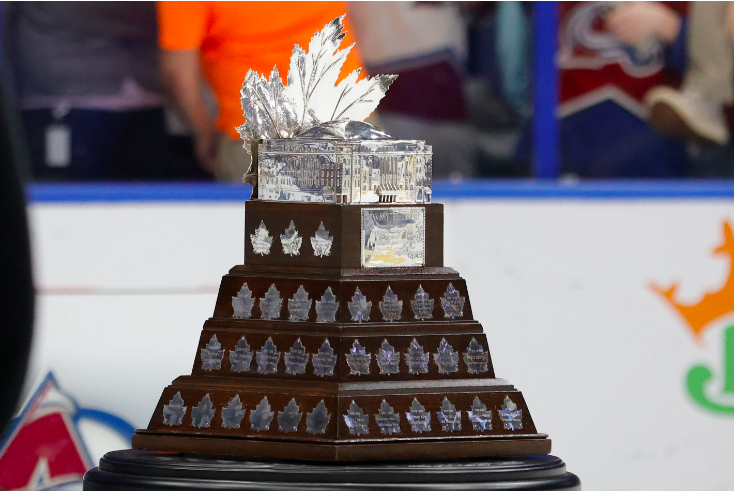
The NHL Conn Smythe Trophy: Celebrating Playoff MVPs in Ice Hockey
The NHL Conn Smythe Trophy is one of the most prestigious awards in ice hockey, given annually to the player judged to be the most valuable to their team during the NHL playoffs. Named after the former owner, general manager, and coach of the Toronto Maple Leafs, Conn Smythe, this award symbolizes excellence and clutch performance when it matters the most. Let’s dive into the rich history, notable winners, and the impact of the Conn Smythe Trophy on the sport of hockey.
The History and Origins of the Conn Smythe Trophy
Inception of the Trophy
The Conn Smythe Trophy was introduced in 1965, designed to honor the most valuable player (MVP) in the Stanley Cup playoffs. Unlike other awards that consider regular-season performance, the Conn Smythe focuses solely on playoff contributions.
Significance of Conn Smythe
Conn Smythe was a towering figure in the world of hockey. As the driving force behind the Toronto Maple Leafs, his legacy is remembered through this trophy. Smythe’s influence on the game, from his strategic innovations to his leadership, makes this award a fitting tribute to his contributions.
Criteria for Awarding the Conn Smythe Trophy
Playoff Performance
The primary criterion for the Conn Smythe Trophy is the player’s performance during the playoffs. This includes scoring, defensive play, leadership, and overall impact on the game.
Voting Process
Members of the Professional Hockey Writers’ Association (PHWA) vote to determine the winner of the Conn Smythe Trophy. Voting takes place immediately after the final game of the Stanley Cup Finals, ensuring that the entire playoff performance is considered.
Notable Conn Smythe Trophy Winners

Bobby Orr: A Legend in Defense
Bobby Orr, the legendary defenseman, was the first player to win the Conn Smythe Trophy twice. His remarkable skill and leadership helped the Boston Bruins secure Stanley Cup victories in 1970 and 1972.
Patrick Roy: Master of the Crease
Patrick Roy stands out as the only player to win the Conn Smythe Trophy three times, each with a different team. His goaltending prowess and ability to perform under pressure make him a true icon in hockey history.
Sidney Crosby: Modern-Day Maestro
Sidney Crosby, with two Conn Smythe Trophies to his name, exemplifies the blend of skill, determination, and leadership that defines a playoff MVP. His contributions to the Pittsburgh Penguins’ success have solidified his place among the greats.
Impact of the Conn Smythe Trophy on Players’ Careers
Elevating Status and Legacy
Winning the Conn Smythe Trophy elevates a player’s status within the league and cements their legacy. It is a testament to their ability to perform when it matters most and often leads to greater recognition and endorsement opportunities.
Team Dynamics
The Conn Smythe Trophy highlights the importance of individual contributions to team success. Players who win this award are often seen as leaders and pivotal figures within their teams, influencing team dynamics and future strategies.
Memorable Moments in Conn Smythe Trophy History
Jean-Sébastien Giguère’s Heroics
In 2003, Jean-Sébastien Giguère became the fifth player to win the Conn Smythe Trophy despite his team, the Anaheim Ducks, losing in the Finals. His outstanding goaltending throughout the playoffs left an indelible mark on the hockey world.
Jonathan Toews’ Leadership
Jonathan Toews’ Conn Smythe win in 2010 showcased his leadership and clutch performances. His ability to elevate his game during critical moments was instrumental in the Chicago Blackhawks’ Stanley Cup victory.
Comparing the Conn Smythe Trophy with Other NHL Awards
Hart Memorial Trophy vs. Conn Smythe Trophy
While the Hart Memorial Trophy is awarded to the regular season’s most valuable player, the Conn Smythe Trophy focuses exclusively on playoff performance. This distinction highlights the unique value of excelling under playoff pressure.
Ted Lindsay Award vs. Conn Smythe Trophy
The Ted Lindsay Award, voted on by the players, recognizes the most outstanding player in the regular season. In contrast, the Conn Smythe Trophy is determined by the media and focuses on the playoffs, offering different perspectives on player excellence.
The Legacy and Future of the Conn Smythe Trophy
Evolving Game Dynamics
As the NHL evolves, so do the attributes valued in Conn Smythe winners. The increasing speed and skill in the game mean that future winners will likely showcase a diverse range of talents, from scoring to defensive acumen.
Rising Stars
Emerging talents like Connor McDavid and Nathan MacKinnon are poised to leave their mark on the playoffs. Their potential to win the Conn Smythe Trophy reflects the ongoing evolution of hockey and the rise of new superstars.
Conclusion
The NHL Conn Smythe Trophy is more than just an award; it is a symbol of playoff excellence and a testament to the players who rise to the occasion when it matters most. From its inception to its notable winners, the Conn Smythe Trophy captures the essence of what it means to be the most valuable player in the most crucial moments of the game. As we look to the future, this prestigious award will continue to celebrate the best in hockey, honoring those who make the greatest impact in the playoffs.
Frequently Asked Questions (FAQs)
Who was the first winner of the Conn Smythe Trophy?
The first winner of the Conn Smythe Trophy was Jean Béliveau of the Montreal Canadiens in 1965.
How many times has Patrick Roy won the Conn Smythe Trophy?
Patrick Roy has won the Conn Smythe Trophy three times, the most by any player, in 1986, 1993, and 2001.
Can a player from the losing team win the Conn Smythe Trophy?
Yes, players from the losing team can win the Conn Smythe Trophy. Notable examples include Jean-Sébastien Giguère in 2003 and Roger Crozier in 1966.
How is the winner of the Conn Smythe Trophy chosen?
The winner of the Conn Smythe Trophy is chosen by a vote from the Professional Hockey Writers’ Association members after the conclusion of the Stanley Cup Finals.
Has a rookie ever won the Conn Smythe Trophy?
Yes, Patrick Roy won the Conn Smythe Trophy as a rookie in 1986, leading the Montreal Canadiens to a Stanley Cup victory with his stellar goaltending.
Sports
The NHL Hart Memorial Trophy: A Deep Dive into Hockey’s Most Prestigious Award
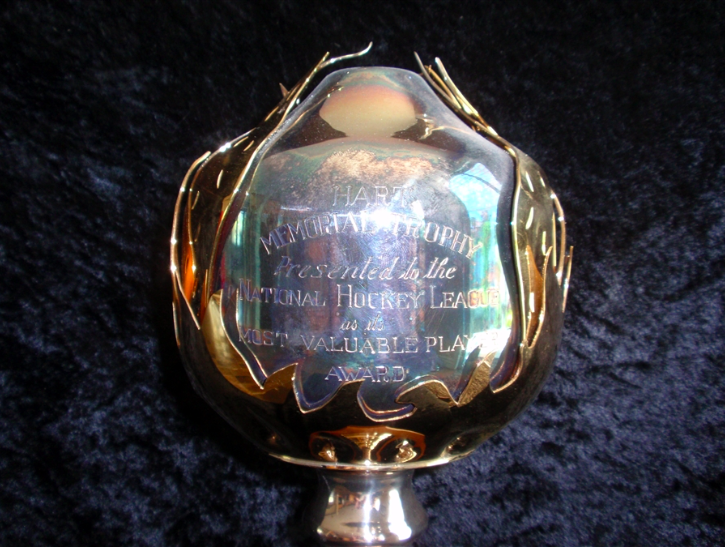
The NHL Hart Memorial Trophy: A Deep Dive into Hockey’s Most Prestigious Award
The NHL Hart Memorial Trophy stands as a testament to excellence in ice hockey, awarded annually to the player judged to be the most valuable to his team. This accolade, named after Dr. David Hart, has a storied history and significant impact on the sport. Let’s explore the origins, criteria, notable winners, and the profound legacy of the Hart Trophy.
The Origins of the Hart Memorial Trophy
Early Beginnings
The Hart Memorial Trophy was first awarded in 1924. Dr. David Hart, the father of Montreal Canadiens coach Cecil Hart, donated the original trophy. It was created to honor the player deemed most valuable to their team, a concept that has become integral to the NHL’s recognition of individual excellence.
Evolution Over the Decades
Initially, the award was based on votes from the NHL coaches. Over time, the voting process evolved to include members of the Professional Hockey Writers’ Association (PHWA), ensuring a broader and more diverse perspective in determining the winner.
Criteria for Winning the Hart Memorial Trophy
Judging Value
The Hart Trophy is unique because it focuses on a player’s value to their team rather than simply their statistical performance. This means the winner often comes from a team that has significantly benefited from their contributions, even if that team doesn’t necessarily top the standings.
Voting Process
The PHWA members cast their votes at the end of the regular season. Each voter selects their top five candidates, and points are awarded based on these rankings. The player with the highest total points is awarded the trophy.
Notable Hart Trophy Winners
Wayne Gretzky: The Great One
Wayne Gretzky’s name is synonymous with the Hart Trophy, having won it a record nine times during his illustrious career. His dominance in the 1980s with the Edmonton Oilers is a benchmark of individual excellence in the NHL.
Gordie Howe: Mr. Hockey
Gordie Howe, with six Hart Trophies to his name, exemplified longevity and consistency. His ability to perform at a high level across multiple decades made him a legend in the sport.
Recent Winners
Recent winners such as Connor McDavid and Leon Draisaitl have brought new excitement to the NHL, showcasing the blend of speed, skill, and strategic thinking that defines modern hockey.
Impact of the Hart Trophy on Careers
Boost in Recognition
Winning the Hart Trophy often elevates a player’s status in the league, leading to increased endorsement opportunities and a lasting legacy. It’s a recognition that cements a player’s place among the all-time greats.
Team Influence
The trophy also highlights the importance of individual contributions to a team’s success. Players who win the Hart are seen as pivotal to their team’s performance, often leading to leadership roles and increased responsibilities.
Controversies and Debates
Subjectivity of Value
Given the subjective nature of “value,” debates often arise about whether the right player was chosen. Factors like team success, statistical dominance, and overall influence can lead to differing opinions among fans and analysts.
Close Contests
There have been numerous instances where the voting was exceptionally close, leading to heated discussions about the merits of each candidate. These debates underscore the passion and engagement of the hockey community.
The Legacy of the Hart Memorial Trophy
Influence on the Game
The Hart Trophy has a profound impact on how players approach the game, knowing that their individual efforts could be recognized with such a prestigious award. It fosters a competitive spirit and drives players to excel.
Historical Significance
As the NHL continues to grow, the Hart Trophy remains a symbol of excellence and achievement. It connects the current generation of players with the legends of the past, preserving the rich history of the sport.
Memorable Hart Trophy Moments
Ovechkin’s Triple Crown
Alex Ovechkin’s third Hart Trophy in 2013 highlighted his scoring prowess and leadership, solidifying his place as one of the greatest goal scorers in NHL history.
Carey Price’s Historic Win
In 2015, Carey Price became the first goaltender to win the Hart Trophy in over a decade, showcasing the significant impact a stellar goaltending season can have on a team’s success.
Comparing the Hart Trophy with Other NHL Awards
The Art Ross Trophy
While the Art Ross Trophy is awarded to the league’s top scorer, the Hart Trophy takes a broader view, considering overall contributions and value. This distinction makes the Hart Trophy unique and highly coveted.
The Ted Lindsay Award
The Ted Lindsay Award, voted by the players, is often seen as a companion to the Hart Trophy. It provides a player’s perspective on who the most outstanding player is, offering another layer of recognition.
The Future of the Hart Memorial Trophy
Emerging Stars
As the NHL continues to evolve, new stars like Auston Matthews and Jack Hughes are emerging as potential Hart Trophy candidates. Their impact on the game ensures the future of the Hart Trophy remains bright.
Changing Dynamics
With the game becoming faster and more skilled, the criteria for winning the Hart Trophy may continue to adapt. Players who excel in multiple facets of the game will likely be at the forefront of future considerations.
Conclusion
The NHL Hart Memorial Trophy represents the pinnacle of individual achievement in hockey. Its rich history, the legends who have won it, and its impact on the game make it a cornerstone of NHL culture. As we look to the future, the Hart Trophy will undoubtedly continue to honor those who exemplify the best in hockey, celebrating the players who make the greatest impact on their teams and the sport.
Frequently Asked Questions (FAQs)
How many times has Wayne Gretzky won the Hart Trophy?
Wayne Gretzky has won the Hart Trophy a record nine times, showcasing his dominance in the NHL during his career.
Who was the first player to win the Hart Memorial Trophy?
The first recipient of the Hart Memorial Trophy was Frank Nighbor of the Ottawa Senators in 1924.
How is the Hart Trophy winner determined?
The Hart Trophy winner is determined by votes from members of the Professional Hockey Writers’ Association, who rank their top five candidates at the end of the regular season.
Has a goaltender ever won the Hart Trophy?
Yes, several goaltenders have won the Hart Trophy, including Carey Price in 2015 and Dominik Hasek, who won it twice in the 1990s.
What distinguishes the Hart Trophy from the Ted Lindsay Award?
While the Hart Trophy is awarded based on votes from sportswriters, the Ted Lindsay Award is voted on by the players themselves, recognizing the most outstanding player in the NHL from their perspective.
Sports
Ice Hockey: A Comprehensive Guide to the Fastest Game on Ice

Ice Hockey: A Comprehensive Guide to the Fastest Game on Ice
Ice hockey, a thrilling and dynamic sport, captures the hearts of millions worldwide. Known for its speed, skill, and intensity, this game is played on ice and requires players to navigate a puck into the opponent’s goal using sticks. Let’s delve deep into the world of ice hockey, exploring its history, rules, equipment, strategies, and the key elements that make it one of the most exciting sports.
The History of Ice Hockey
Origins and Early Development
Ice hockey’s roots trace back to various stick-and-ball games played in Europe centuries ago. However, it was in Canada during the 19th century that the modern version of the game began to take shape. The first organized indoor hockey game took place in Montreal on March 3, 1875, a landmark event that set the stage for the sport’s evolution.
The Birth of Professional Ice Hockey
Professional ice hockey emerged in the early 20th century with the formation of leagues such as the National Hockey Association (NHA) and later, the National Hockey League (NHL) in 1917. The NHL has since become the premier professional ice hockey league globally, featuring teams from both the United States and Canada.
The Fundamentals of Ice Hockey
The Playing Surface
Ice hockey is played on a rectangular rink with rounded corners. The rink measures 200 feet by 85 feet in the NHL, with slightly larger dimensions in international play. The surface is divided into three zones: the defensive zone, the neutral zone, and the offensive zone.
Basic Rules and Objectives
The primary objective of ice hockey is to score more goals than the opposing team. Each team has six players on the ice, including a goaltender. The game consists of three 20-minute periods, with intermissions in between.
Key rules include:
- Offside: Players must not enter the offensive zone ahead of the puck.
- Icing: Shooting the puck from behind the center line past the opponent’s goal line without it being touched.
- Penalties: Infractions such as tripping, hooking, and slashing result in time in the penalty box.
Essential Equipment
Skates and Sticks
Players wear specialized ice hockey skates designed for agility and speed. Sticks are made of composite materials or wood, featuring a curved blade for better puck control.
Protective Gear
Safety is paramount in ice hockey. Players don helmets, shoulder pads, elbow pads, gloves, shin guards, and mouthguards. Goaltenders wear additional protective gear, including leg pads, chest protectors, and masks.
The Puck
The puck is a hard rubber disc, measuring three inches in diameter and one inch thick. It is frozen before games to reduce bouncing on the ice.
Game Strategies and Tactics
Offensive Strategies
Effective offensive play in ice hockey involves various strategies to outmaneuver the defense and create scoring opportunities. Common tactics include:
- Forechecking: Pressuring the opponent in their defensive zone to regain possession.
- Cycling: Moving the puck along the boards in the offensive zone to tire out defenders.
- Power Play: Capitalizing on a numerical advantage when the opposing team has a player in the penalty box.
Defensive Strategies
Defensive play aims to prevent the opposing team from scoring. Key strategies include:
- Backchecking: Forwards helping defend by skating back to their zone.
- Penalty Killing: Successfully defending while a player is in the penalty box.
- Shot Blocking: Defenders sacrificing their bodies to block shots on goal.
The Role of the Goaltender
Goaltending Techniques
Goaltenders, or goalies, play a crucial role in ice hockey. Their primary responsibility is to stop the puck from entering the net. Techniques include:
- Butterfly Style: Dropping to the knees to cover the lower part of the net.
- Stand-up Style: Remaining upright to block high shots.
- Hybrid Style: Combining elements of both butterfly and stand-up styles.
Famous Goaltenders
Legendary goaltenders such as Patrick Roy, Martin Brodeur, and Dominik Hasek have left an indelible mark on the game, showcasing extraordinary skill and athleticism.
The Culture of Ice Hockey
Fan Engagement and Traditions
Ice hockey boasts a passionate fan base, with traditions such as the playoff beard and the throwing of hats for hat-trick performances. Fans are known for their unwavering support and enthusiasm.
International Competitions
Ice hockey is a global sport, with prestigious tournaments such as the Winter Olympics, the IIHF World Championship, and the World Junior Championship highlighting international talent.
Ice Hockey Leagues and Teams
The NHL
The NHL, with 32 teams, is the pinnacle of professional ice hockey. Teams like the Montreal Canadiens, Toronto Maple Leafs, and Chicago Blackhawks have rich histories and loyal fan bases.
Other Prominent Leagues
Other notable leagues include the Kontinental Hockey League (KHL) in Russia, the Swedish Hockey League (SHL), and the American Hockey League (AHL), which serves as a development league for the NHL.
The Impact of Ice Hockey on Society
Youth Development and Community Programs
Ice hockey fosters youth development through programs like USA Hockey and Hockey Canada. These initiatives promote skills, teamwork, and sportsmanship.
Philanthropy and Social Initiatives
Many players and organizations are involved in charitable efforts, using their platform to give back to communities and support various causes.
The Future of Ice Hockey
Technological Advancements
Technological innovations, such as advanced analytics and improved equipment, are enhancing the game. The use of video review and tracking systems provides deeper insights into player performance.
Growing Global Popularity
Ice hockey’s popularity continues to grow worldwide, with increasing participation in non-traditional markets like Asia and Australia. Efforts to make the sport more inclusive and accessible are expanding its reach.
Conclusion
Ice hockey, with its rich history and dynamic gameplay, captivates fans across the globe. From the origins of the sport in Canada to its current status as a worldwide phenomenon, the game has evolved significantly. The strategies, skills, and passion involved make ice hockey one of the most exhilarating sports. Whether you’re a seasoned fan or new to the game, there’s always something exciting to discover in the world of ice hockey.
Frequently Asked Questions (FAQs)
What is the significance of the Stanley Cup in ice hockey?
The Stanley Cup is the oldest professional sports trophy in North America, awarded annually to the NHL champion. Winning the Stanley Cup is the pinnacle of success in ice hockey.
How does the NHL draft work?
The NHL draft allows teams to select eligible players from amateur or junior leagues. The draft order is determined by the previous season’s standings, with the worst-performing teams picking first.
What is a hat trick in ice hockey?
A hat trick occurs when a player scores three goals in a single game. Fans traditionally celebrate by throwing hats onto the ice.
Who holds the record for the most goals in an NHL season?
Wayne Gretzky holds the record for the most goals in an NHL season, with 92 goals scored during the 1981-82 season.
How do power plays and penalty kills impact a game?
Power plays give a team a numerical advantage due to an opponent’s penalty, increasing scoring chances. Penalty kills involve successfully defending while down a player, demonstrating strong defensive skills.
-

 NBA4 months ago
NBA4 months agoLaMelo Ball Net Worth: A Comprehensive Look at the NBA Star’s Financial Empire
-

 Football5 months ago
Football5 months agoMeet the World Football Celebrities and Their Stories
-

 Football4 months ago
Football4 months agoEuro 2024: Alvaro Morata Speaks Out About ‘No Respect’ in Spain
-

 Game5 months ago
Game5 months agoThe Ultimate Guide to General Multi-Sport Events
-

 Football4 months ago
Football4 months agoEuro 2024 Power Rankings: Spain Remains Dominant Ahead of Semifinals
-
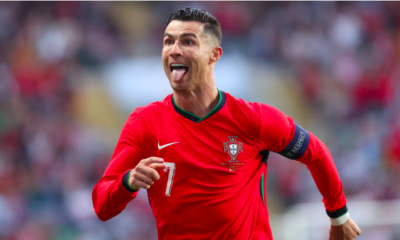
 Football4 months ago
Football4 months agoRonaldo’s Business Ventures and Investments (CR7 Brand)
-

 NBA5 months ago
NBA5 months agoTop NBA Celebrities in the World: The Biggest Stars
-
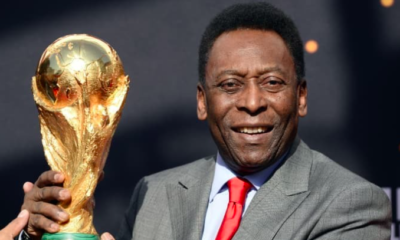
 Sports6 months ago
Sports6 months agoPele: The Legendary Journey of Football’s Greatest Icon | The Immortal King of Football




